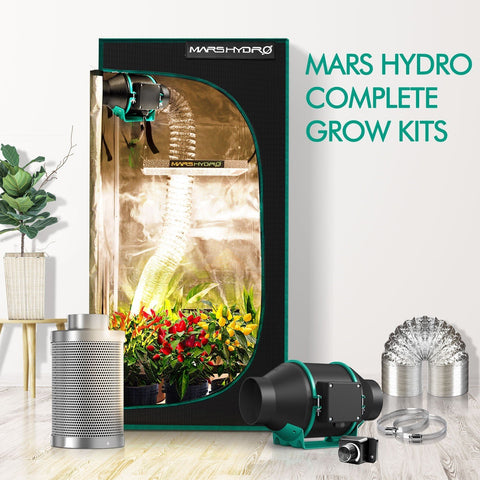About Growing
5 Factors About Grwoing Environment
Plant growth is greatly affected by the environment. If any environmental factor is not ideal, it restricts the growth and distribution of plants. Whether direct or indirect, most plant problems are caused by environmental stress. In other cases, environmental stress weakens the plant, making it more vulnerable to disease or insect attack.
Environmental factors that affect plant growth include light, temperature, water, humidity, and nutrients. It is important to understand how these factors affect plant growth and development. With a basic understanding of these factors, you may be able to manipulate plants to suit your needs, whether it's increasing the yield of leaves, flowers, or fruit.
Light
Light affects three main characteristics of plant growth: quantity, quality and duration.
Quantity--Light quantity refers to the intensity or concentration of sunlight. It changes with the seasons. The most sunlight is in summer and the least in winter.
Quality--Light quality refers to the color (wavelength) of light. Sunlight provides a complete range of wavelengths that can be resolved by a prism into bands of red, orange, yellow, green, blue, indigo, and violet. Blue light is mainly responsible for plant (leaf) growth. When red light is combined with blue light, it promotes flowering.
Period--Duration or photoperiod refers to the amount of time a plant is exposed to light. Photoperiod controls the flowering of many plants.
Temperature
Temperature affects most plant processes, including photosynthesis, transpiration, respiration, germination, and flowering. As the temperature increases (up to a certain point), photosynthesis, transpiration, and respiration increase.
Water and Humidity
Most growing plants contain about 90% water. Water plays many roles in plants. Relative humidity is the ratio of the water vapor in the air to the amount of water the air can hold at the current temperature and pressure. Warm air can hold more water vapor than cold air. Water vapor moves from areas of high relative humidity to areas of low relative humidity. The greater the difference in humidity, the faster the water moves. This factor is important because the rate of water movement directly affects the transpiration rate of plants.
Plant Nutrition
Plant nutrition is often confused with fertilization. Plant nutrition refers to the needs and utilization of basic chemical elements by plants. Fertilization is the term used when these materials are added to the environment around the plant.
Fertilizer
Fertilizers are materials that contain plant nutrients that are added to the environment around plants. Usually, they are added to water or soil, but some can be sprayed on foliage. This method is called foliar fertilization. It should be done carefully with a dilute solution, as high concentrations of fertilizer can damage leaf cells. However, nutrients do need to pass through the thin layer of wax (cuticle) on the leaf surface.
Nutrient absorption
Anything that reduces or stops the leaves from producing sugar will reduce nutrient absorption. Therefore, if plants are stressed due to insufficient light or extreme temperatures, nutrient deficiencies can occur.
The developmental stage or growth rate of the plant may also affect the amount of nutrients absorbed. Many plants have periods of rest (dormancy) for part of the year. During this time, very few nutrients are absorbed. When flower buds begin to develop, plants may also take in different nutrients than they do during periods of rapid vegetative growth.

















